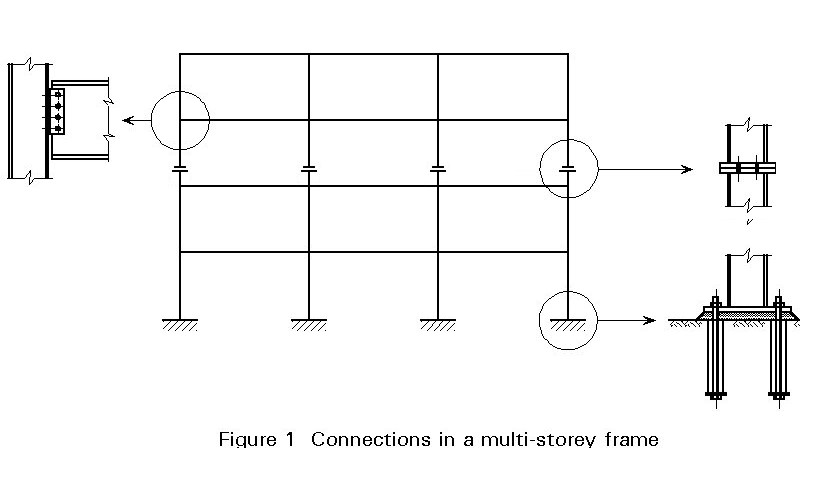To identify the ways in which structural connections are made in steel buildings, to discuss the importance of a proper choice of connection type for both overall structural behaviour and economics, and to present the basic principles of connection design.
The need for various forms of structural connections in steel buildings is established and their basic forms are identified. Methods of making connections are discussed within the context of transferring local forces between components, ensuring consistency of overall structural behaviour, and the practical aspects of fabrication and erection. The basic principles of connection design are thus established.
Steel frame buildings consist of a number of different types of structural elements, each of which has to be properly attached to the neighbouring parts of the structure. This will involve the use of several forms of connection. The main classes of connection:
i) are where a change of direction occurs, e.g. beam-to-column connections, beam-to-beam connections, and connections between different members in trusses
ii) ensure manageable sizes of steelwork for transportation and erection (e.g. columns are normally spliced every two or three storeys)
iii) are where a change of component occurs, including connection of the steelwork to other parts of the building, e.g. column bases; connections to concrete cores; and connections with walls, floors, and roofs
Figure 1 gives examples of connections within the context of a multi-storey frame.

Connections are important parts of every steel structure. The mechanical properties of the connections are of great influence on the strength, stiffness, and stability of the whole structure.
The number and the complexity of the connections have a decisive influence on the time that is necessary for the statical analysis and the production of drawings.
Production of connections (i.e. cutting, drilling, and welding of main members, plates, cleats, and stiffeners) consumes much of the work content in the fabrication shop. The ease with which the site connections can actually be made is a key factor in erection.
Thus, the selection, design, and detailing of the connections in a building frame have a very significant influence on costs.
Read moreIntroduction to the design of simple industrial buildings
Read LectureIntroduction to the design of multi-storey buildings: part 1
Read Lecture